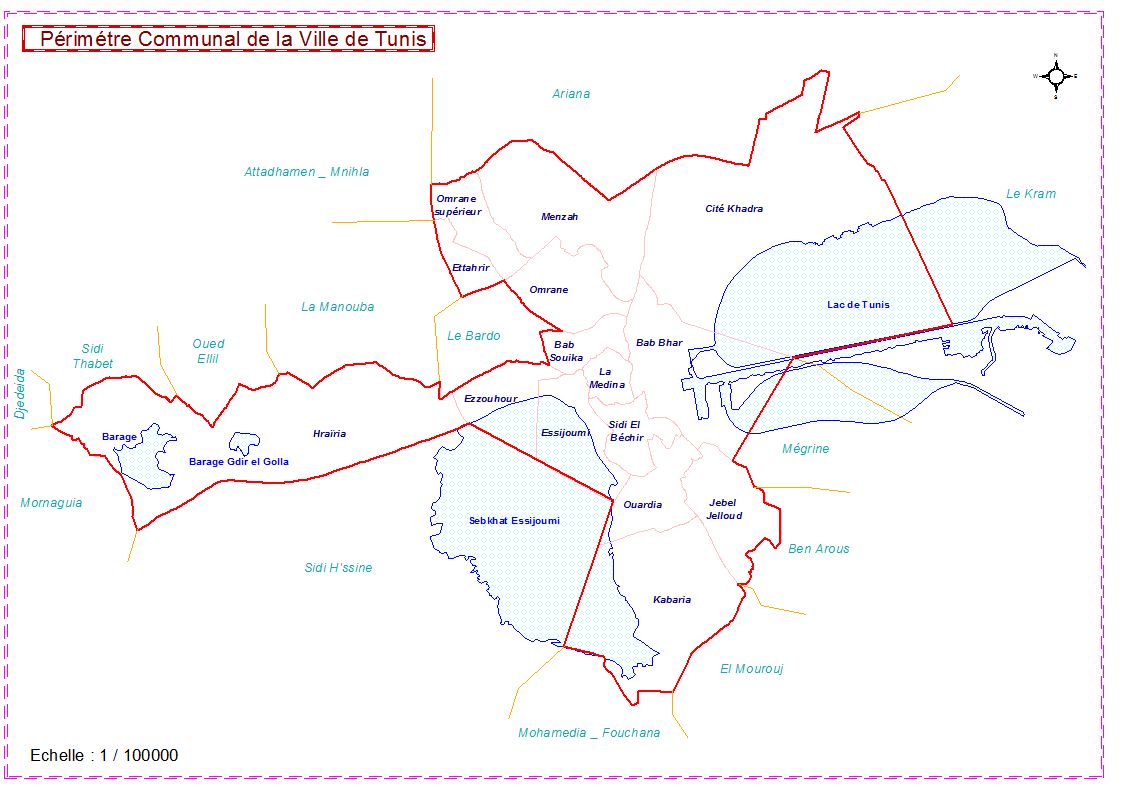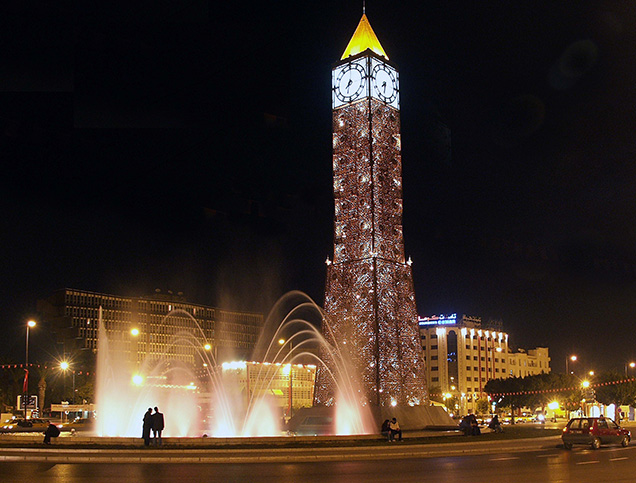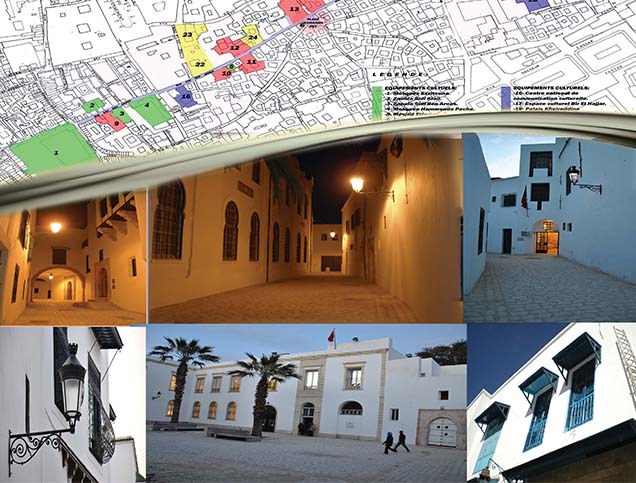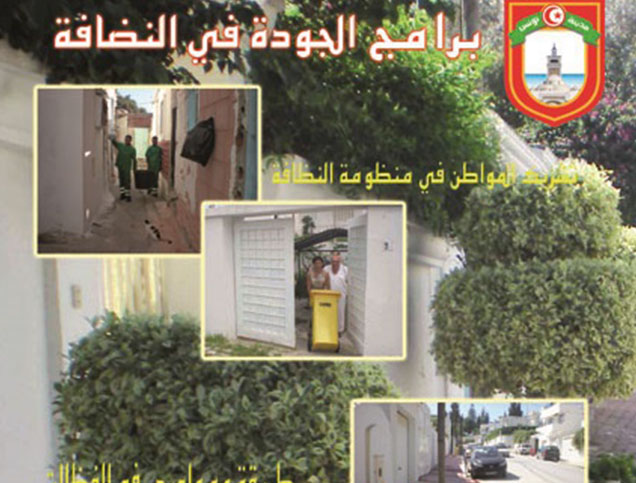
Close

Tunisia is located in the far north of Africa, and its capital is Tunis. It is bordered by Algeria on the west, with a common border of 965 kilometers. In the southeast, it shares a border with Libya, which is 459 kilometers long. Tunisia has a large coastline on the Mediterranean Sea in the north and east, which is 1,148 kilometers long. The total area of the municipality’s territory is 131.36 square kilometers.
Historically, the Tunis Municipality was established in 1789. It was called the Sheikhdom of Tunis during the reign of the Beys, but the name was changed to Tunis Municipality in 1858. The Municipal Palace building was inaugurated on 8 November 1998. It is located in Kasbah Square, next to the headquarters of the Tunisian government. The Great Mosque of Ez-Zitouna, founded in 698 AD (79 AH), is one of the city’s most prominent landmarks. It is the main mosque in the Medina of Tunis [old town of Tunis] in the capital, Tunis, and the largest and oldest of them, and it is Sunni following the Maliki school of thought.

Title: Map shows the administrative boundary of the city.
Source: Tunis Municipality.
Tunis is one of the largest Tunisian cities in terms of population, with a population of 1,000,000 people, and is visited by about 1,200,000 visitors daily. As for the age group of the population of Tunisia, the group under 18 years old constitutes 30.79% of the population, the group from 18 to 45 years old constitutes 32.12% of the population, the group from 45 to 60 years old constitutes 22.95% of the population, and the group over 60 years old constitutes 10.15% of the population.
As for the population distribution by gender, males constitute 49% and females constitute 51%. Regarding educational level, 12.5% of the population has less than primary education, 56.8% have primary and secondary education, and 30.7% have higher education. As for the nature of the place of residence, all residents live in an urban environment.

Title: One of the Landmarks of Tunis.
Source: Tunis Municipality.

Title: Renovating the Paths in the Old Town.
Source: Tunis Municipality.

Title: The Quality Hygiene Program.
Source: Tunis Municipality.

Title: Electronic Administration in Tunis Municipality.
Source: Tunis Municipality.
The city of Tunis, which has always been known as “Green Tunisia,” pays great attention to developing green areas and promoting environmental awareness, considering green areas as an essential element in ensuring a healthy and enjoyable environment. The space of green areas is 1,062 hectares, with the per capita share of green spaces amounting to 14.65 m2 per person.
Furthermore, the city is carrying out environmental projects, and it has been decided to focus on a model plan for cleanliness in the central area, which is as follows:
• Taking out the waste, according to activity type, once daily and at the usual time (8:00 pm) or at other times agreed upon with the municipal departments.
• Preparing waste in sealed bags or bundles for wrapping boxes (cardboard) and placing them in front of the stores.
• Agreeing with the municipality to remove unusual waste, according to activity type, for a fee.
• The strict prohibition on the use of public roads without prior authorization from the municipal authorities.
• Banning sweeping in front of shops without spraying water or at times other than the specified ones (before 7:00 am or when the shop closes).
• Prohibiting washing of the shops, facades, and sidewalks at times other than the specified times (before 7:00 am or when the shop closes).
• Shop facades should be painted, bleached, and washed regularly.
• Brand maintenance and upkeep.
The most important economic activities within Tunis Municipality are distributed as follows: Agricultural activity covers about 1,210 hectares, followed by commercial activity with 19,833 units, industry has 273 units, and the banking sector represents 164 units. Finally, the tourism sector includes 140 units.
Not Available.
The first traffic plan for the city of Tunis was designed in 1975. As for the second traffic plan, which is currently being implemented, it was studied in 1982 and adopted in stages in light of the completion of the light metro network in 1985 and was completed in 1989-1990.
This study established the parking policy in the city of Tunis, which is an essential aspect of the success of the traffic plan. The most important objectives of the traffic plan are to reduce pressure on the environment and ensure pedestrian protection and access to the city center via transportation while maintaining a balance between infrastructure capacity and travel requirements to maintain the continuity of activities in the city. The priorities were arranged as follows: pedestrians, public transportation, and public roads.
References:
1. www.commune-tunis.gov.tn/publish/content/article.asp?id=18514